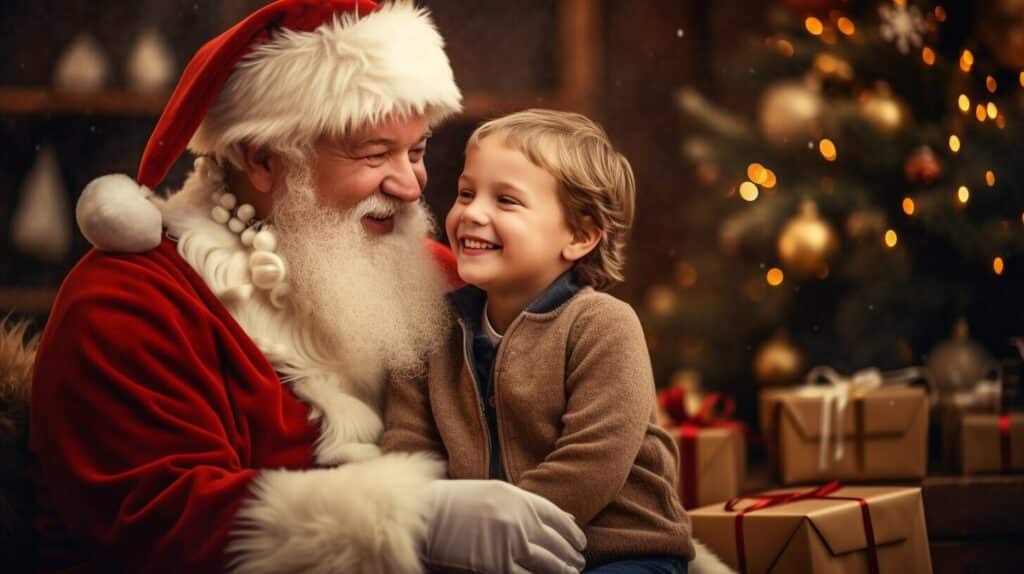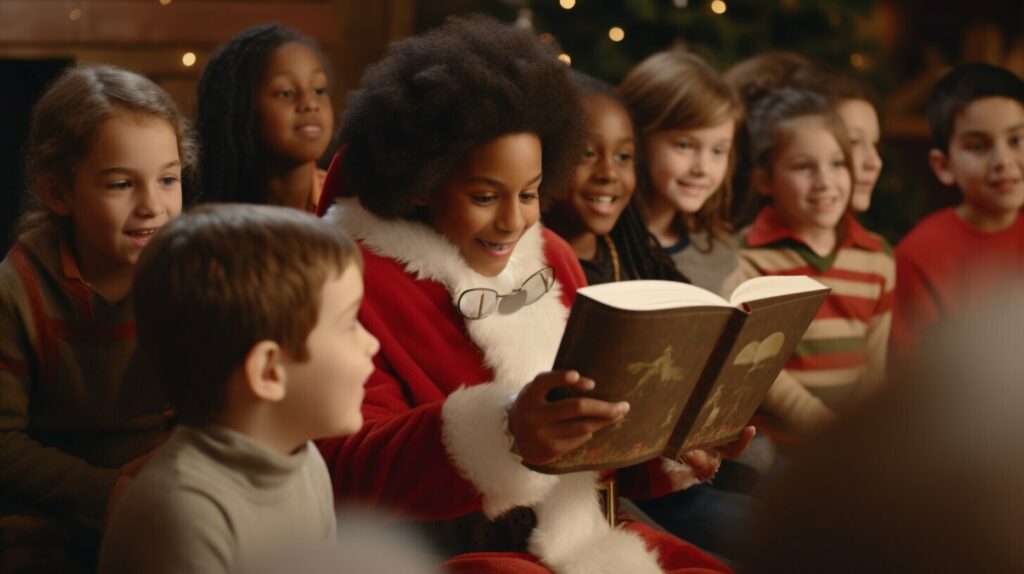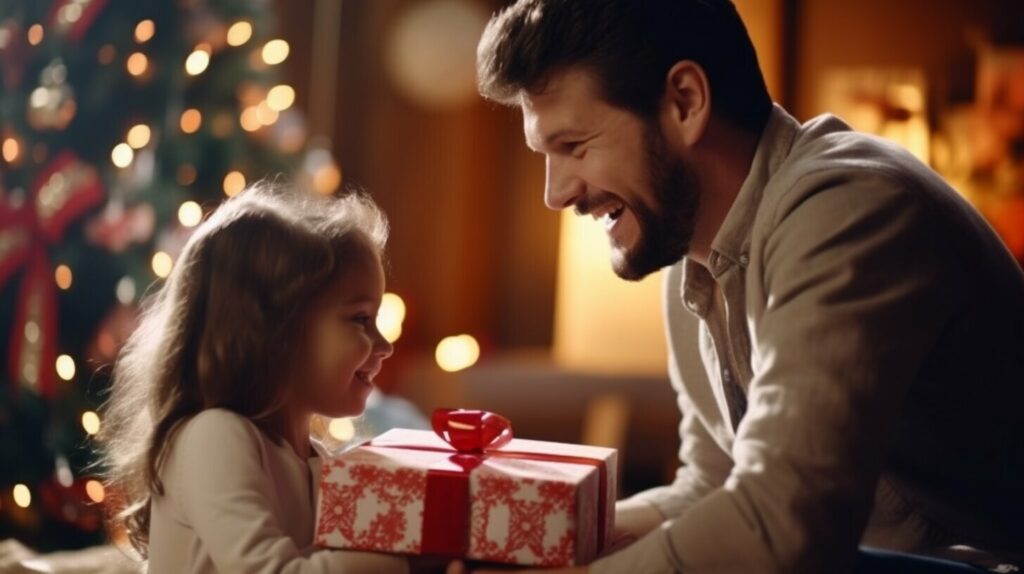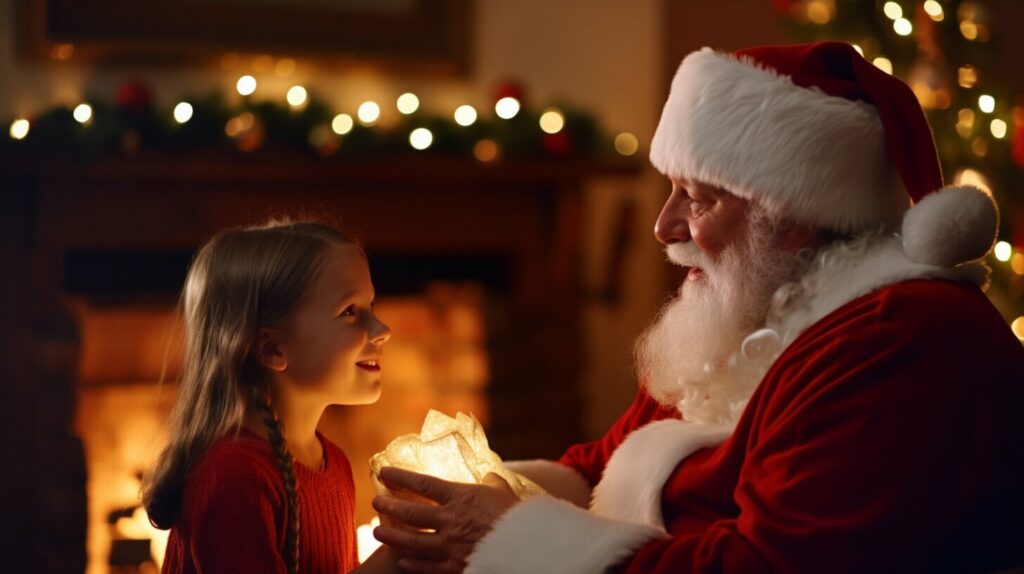As the holiday season approaches, the topic of Santa Claus is sure to come up in conversation with your child. It can be a difficult subject to navigate, but introducing your child to the magic of Santa Claus can be a wonderful and memorable experience. In this article, we will provide tips and guidance on how to explain Santa Claus to a child, from discussing his origins to keeping the magic alive for as long as possible.
Key Takeaways:
- Explaining Santa Claus to a child can be a magical experience.
- Understanding the origins and values associated with Santa Claus can help in explaining the concept to children.
- Keeping the magic of Santa Claus alive can be achieved through traditions and activities.
The Magic of Santa Claus
Introducing Santa Claus to a child can be both an exciting and daunting task. After all, Santa is more than just a jolly man in a red suit; he is a symbol of the holiday season and a source of magic and wonder for many children.
So, how do you explain Santa Claus to a child in a way that is both age-appropriate and captures the excitement of the season? First and foremost, it’s important to emphasize the joy that Santa brings to children all around the world.
One way to introduce Santa Claus is by describing him as a magical figure who delivers presents to children on Christmas Eve. You can explain that he travels in a sleigh pulled by reindeer and visits every child’s home to leave presents under their Christmas tree or in their stockings.
It’s also helpful to emphasize the importance of being kind and well-behaved, as Santa Claus is said to keep a watchful eye on children throughout the year and rewards those who are good with gifts on Christmas.

The magic of Santa Claus can also be integrated into holiday traditions and activities. For example, leaving cookies and milk out for Santa on Christmas Eve or writing him a letter to thank him for the gifts he brings can help children feel a sense of wonder and excitement during the holiday season.
Overall, introducing Santa Claus to a child can be a fun and memorable experience. By emphasizing the joy and magic associated with Santa, you can help nurture a child’s imagination and create lasting holiday traditions.
The Origins of Santa Claus
Explaining the story of Santa Claus to your child can be a fun and exciting experience. By learning the origins of this beloved figure, you can help your child understand the cultural and historical background behind the jolly man in the red suit.
The origins of Santa Claus can be traced back to the fourth century, to a Christian bishop named Saint Nicholas. He lived in what is now modern-day Turkey and was known for his generosity and kindness towards children. The legend of Saint Nicholas spread throughout Europe and eventually made its way to America, where it evolved into the figure we know today as Santa Claus.

One of the most recognizable aspects of Santa Claus is his iconic red suit. However, the original Saint Nicholas was often depicted wearing a bishop’s robe and hat. It wasn’t until the early 20th century that the modern image of Santa Claus, complete with a red suit, white beard, and rosy cheeks, became popularized in advertisements and popular culture.
Teaching your child about the origins of Santa Claus can help them understand the rich history and cultural significance behind this beloved Christmas figure. By sharing these stories, you can help your child appreciate the magic and wonder of the holiday season.
Santa Claus as a Symbol of Generosity and Kindness
One of the most important aspects of introducing your child to Santa Claus is helping them understand the values he represents. Santa Claus is a symbol of generosity, kindness, and giving. By embracing the spirit of Santa Claus, children learn the importance of these values early on.
When explaining Santa Claus to your child, it’s important to emphasize that he encourages children to be kind to others and express gratitude. You can talk to your child about different ways they can show kindness, like sharing toys or doing something nice for a friend. Encourage them to think about what they are thankful for, and help them write a letter to Santa expressing their gratitude.

As your child grows older, they may begin to question the existence of Santa Claus. It’s important to remind them that even if Santa isn’t a real person, the values he represents are still important. You can encourage your child to carry on the tradition of giving by participating in community service projects or donating toys to children in need.
By teaching your child about the spirit of Santa Claus, you are helping them develop a strong moral compass and sense of empathy towards others. It’s a wonderful way to celebrate the holiday season and help your child grow into a kind and thoughtful individual.
How Does Santa Claus Deliver Gifts?
Children are naturally curious and imaginative, so it’s not surprising that they may have questions about how Santa Claus is able to deliver gifts to children all over the world in just one night. As a parent, it’s important to provide age-appropriate explanations that maintain the magic of the holiday season while also fostering a sense of wonder and curiosity.
One common explanation is that Santa Claus has magical abilities that allow him to travel around the world at lightning-fast speeds. He also has a team of helpers, including his trusty reindeer and hardworking elves, who help him make and wrap all the presents for children.
You can also explain that Santa Claus operates on a different time scale than we do, and that the night he delivers presents is actually much longer than a regular night. This can help children understand how Santa is able to visit so many houses in one evening.
Remember to keep the conversation light and playful, and encourage your child’s imagination to run wild. Answering their questions about Santa Claus can be a fun and enjoyable experience for both you and your child.

Tip: If your child is particularly interested in the mechanics of Santa Claus’s journey, consider creating a map or diagram to show them how he travels around the world. You could even make a game out of it, asking your child to track Santa’s progress on Christmas Eve.
Discussing the Santa Claus Tradition with Your Child
When it comes to discussing Santa Claus with your child, it’s important to approach the conversation with empathy and understanding. Children have wild imaginations and may have different ideas and expectations about Santa Claus. Some may already know everything about Santa, while others may not have any idea at all. No matter what, it’s important to make sure they feel heard and respected.
Start by asking your child what they know and believe about Santa Claus. Listen to their responses and avoid interrupting or correcting them. This will help you gauge their level of understanding and prepare you for any questions they might ask.
As the conversation progresses, it’s important to be truthful and explain that Santa Claus is a fictional character who represents kindness, generosity, and the spirit of giving. You can also talk about how Santa Claus is a tradition and a fun part of the holiday season for many families.
Remember, honesty is key. If your child asks you outright if Santa Claus is real, it’s okay to admit that he is not a real person, but rather a symbol of the Christmas season.
It’s also important to be prepared for when your child may start to question the existence of Santa Claus. This is a natural part of growing up and developing critical thinking skills. Try to be understanding and supportive of their curiosity and encourage them to keep the magic of the holiday season alive in their own way, whether that means pretending to believe in Santa Claus or finding joy in other holiday traditions.
Remember, the goal is to support your child’s imagination and foster a love for the holiday season.

Honoring Different Beliefs and Traditions
It’s important to remember that not all families celebrate Santa Claus, and it’s essential to be respectful of different beliefs and traditions during the holiday season. Some families may celebrate different holidays or have personal reasons for not incorporating Santa Claus into their holiday traditions. Therefore, it’s crucial to approach conversations with sensitivity and inclusivity.
When discussing Santa Claus with your child, try to be mindful of how your words might impact other children who may not share your family’s beliefs. Use language that is open and inclusive, like “Some families believe in Santa Claus, while others may not celebrate him.” Encourage your child to respect other people’s beliefs and traditions, even if they are different from their own.
One way to honor different beliefs and traditions is to expose your child to a variety of holiday traditions from different cultures and religions. You can read books or watch videos about different celebrations or even attend a local holiday festival to learn more about how other families celebrate the season.
Remember, the holiday season is a time to celebrate kindness, generosity, and love regardless of your beliefs or traditions. By teaching your child to be respectful and inclusive, you can help spread the holiday spirit to everyone around you.

Encouraging Imagination and Creativity
Believing in Santa Claus can offer a world of imagination and creativity for children. The idea of someone flying around the world on a sleigh pulled by reindeer and delivering presents to every child can spark their imaginations and inspire creativity.
Encourage your child’s creativity by incorporating Santa Claus into imaginative play. Set up a Santa’s Workshop with toys and crafting supplies, or encourage them to write letters to Santa and leave them by the fireplace.
Another way to nurture their creativity is through storytelling. There are countless stories about Santa Claus and his adventures that can be read aloud or acted out as a family. This can also be an opportunity to teach lessons about the values that Santa Claus represents, such as kindness and generosity.

Remember, it’s important to allow your child to explore their own imagination and develop their own ideas about Santa Claus. Don’t be afraid to let them take the lead in imaginative play and storytelling, as this can help them develop their own unique perspective and creativity.
The Joy of Giving
One of the most important lessons that Santa Claus teaches children is the joy of giving. From a young age, children learn that Santa Claus brings gifts to those who have been good throughout the year. This encourages children to think about how they can be kind and helpful to others, whether it’s by sharing toys, doing chores without being asked, or simply saying “thank you” to those who help them.
As your child grows older, you can encourage them to take a more active role in giving by participating in charitable activities, such as donating toys or volunteering at a local shelter. You can also teach them about the importance of giving back to their community and making a positive impact on the world around them.

The spirit of giving that Santa Claus embodies can also help children develop a sense of empathy and compassion for others. By focusing on the needs and desires of those around them, children can learn to put their own wants and needs aside and think about how they can help others. This can lead to a stronger sense of connection and belonging within the family and community.
Overall, the joy of giving is a valuable lesson that children can learn from Santa Claus. By encouraging generosity and kindness, parents can help their children develop into thoughtful, caring individuals who make a positive impact on the world around them.
Answering Curious Questions
As children begin to learn more about the world around them, it’s natural for them to have questions about Santa Claus. Here are a few tips for answering some of their more curious inquiries:
- Be honest but age-appropriate: It’s ok to acknowledge that some aspects of Santa Claus are make-believe, while still emphasizing the magic and wonder of the holiday season. Keep your responses simple and tailored to your child’s age and level of understanding.
- Encourage critical thinking: Ask your child questions to encourage them to think through their beliefs and conclusions. For example, “How do you think Santa is able to visit so many houses in one night?”
- Respect their beliefs: If your child expresses a belief in Santa Claus, respect their feelings and encourage them to continue to believe as long as they’d like.

Remember, these conversations are an opportunity to foster your child’s curiosity and imagination while also sharing the joy and spirit of the holiday season.
Keeping the Magic Alive
As your child grows older, their understanding and beliefs about Santa Claus may change. It’s important to continue to foster the magic and excitement of the holiday season, even as they begin to question the existence of Santa.
One way to keep the magic alive is through the use of traditions. Create special family traditions that your child can look forward to each year, such as baking cookies for Santa or leaving him a note on Christmas Eve. These traditions help to reinforce the idea of Santa and add to the excitement of the season.
Another way to keep the magic alive is by encouraging imagination and creativity. Allow your child to explore the world of Santa Claus through books, movies, and imaginative play. Emphasize the joy and wonder that comes with believing in something magical and teach them to appreciate the importance of holding onto their sense of wonder and imagination.

Finally, be open to your child’s questions and concerns about Santa Claus. Answer their questions honestly and openly, acknowledging that different families have different beliefs and traditions. Encourage them to think critically and make their own decisions about what they choose to believe.
By keeping the magic alive and nurturing your child’s imagination, you can help to ensure that the spirit of Santa Claus remains a cherished part of their holiday memories for years to come.
Conclusion
Congratulations, you have successfully navigated the topic of Santa Claus with your child! Remember that this conversation can be a magical and exciting experience for both you and your child. By providing child-appropriate explanations and highlighting the values of generosity and kindness, you have helped your child understand the wonder and joy associated with Santa Claus.
As your child grows and begins to ask more questions, continue to be open and honest in your discussions about Santa Claus. Remember to honor different beliefs and traditions and to encourage your child’s imagination and creativity.
Most importantly, keep the magic of Santa Claus alive by incorporating traditions and activities during the holiday season. Whether it’s leaving cookies for Santa or writing letters to him, these small gestures can maintain the excitement and wonder of the holiday season for years to come.
How Do I Explain concepts to my Child in a Child-Friendly Manner?
When it comes to discussing sensitive topics like periods with your child, it’s important to approach it in a child-friendly manner. A friendly guide for explaining periods can be a valuable tool in helping parents explain this concept to their children. By using simple language, visual aids, and age-appropriate explanations, parents can provide accurate information while ensuring their child feels comfortable and confident in understanding this natural process.
FAQ
Q: How do I explain Santa Claus to my child?
A: Explaining Santa Claus to your child can be a magical and exciting experience. It’s important to emphasize the joy and wonder that Santa brings during the holiday season. You can describe Santa as a kind and generous figure who brings gifts to children all around the world on Christmas Eve.
Q: What is the magic of Santa Claus?
A: The magic of Santa Claus lies in the joy and excitement he brings to children during the holiday season. Santa is often associated with flying reindeer, a magical sleigh, and delivering gifts to every child on Christmas Eve. It’s a time of wonder and anticipation that adds to the joy of the holiday season.
Q: What are the origins of Santa Claus?
A: Santa Claus has a rich history and is based on various legends and traditions from around the world. The modern-day Santa Claus is often associated with the story of Saint Nicholas, a generous bishop who lived in the 4th century. Over time, different cultures and traditions influenced the image of Santa Claus that we know today.
Q: What values does Santa Claus represent?
A: Santa Claus represents values such as generosity, kindness, and giving. He encourages children to be kind to others and express gratitude. Santa Claus embodies the spirit of the holiday season, reminding us of the importance of helping those in need and spreading joy to others.
Q: How does Santa Claus deliver gifts?
A: Santa Claus is said to have magical abilities that allow him to deliver gifts to every child in the world on Christmas Eve. He uses a sleigh pulled by flying reindeer and often has the assistance of elves who help prepare and deliver the gifts. It’s all part of the enchantment and wonder of the holiday season.
Q: How do I discuss the Santa Claus tradition with my child?
A: When discussing the Santa Claus tradition with your child, it’s important to be open and honest. Address any questions or concerns they may have, while maintaining the magic and excitement of the holiday season. Tailor the conversation to their age and understanding, and reassure them that the spirit of Santa Claus brings joy to many.
Q: How do I honor different beliefs and traditions surrounding Santa Claus?
A: It’s important to respect and honor different beliefs and traditions surrounding the holiday season. Not all children celebrate Santa Claus, and it’s essential to approach conversations with sensitivity and inclusivity. Encourage your child to learn about and appreciate the diversity of beliefs and traditions that exist.
Q: How does Santa Claus encourage imagination and creativity?
A: Believing in Santa Claus can foster imagination and creativity in children. Santa Claus becomes a part of their imaginative world, encouraging pretend play and storytelling. It allows children to use their creativity to envision Santa’s magical abilities and the enchanting experiences associated with him.
Q: How can I teach my child about the joy of giving?
A: Santa Claus can be a wonderful way to teach children about the joy of giving. Emphasize the importance of thoughtful acts of kindness and how the spirit of Santa Claus can inspire children to make a positive difference in the lives of others. Encourage them to participate in charitable activities and to give selflessly.
Q: How do I answer my child’s curious questions about Santa Claus?
A: When answering your child’s curious questions about Santa Claus, it’s important to provide age-appropriate responses. Be honest while maintaining the magic and wonder of the holiday season. If your child begins to question the existence of Santa, reassure them that Santa represents the spirit of giving and the joy of the holiday season.
Q: How can I keep the magic of Santa Claus alive?
A: There are many ways to keep the magic of Santa Claus alive for as long as possible. Incorporate traditions and activities that maintain the excitement and wonder of the holiday season. Create special moments and memories that celebrate the joy and magic that Santa Claus brings to children around the world.






